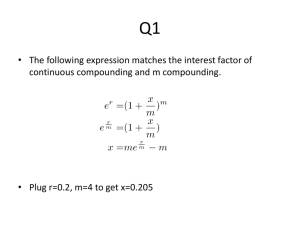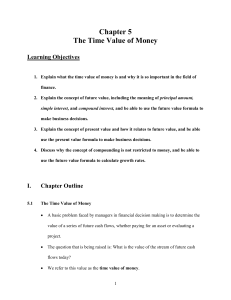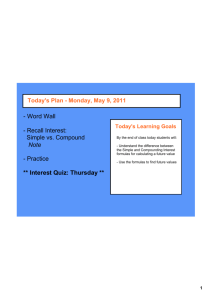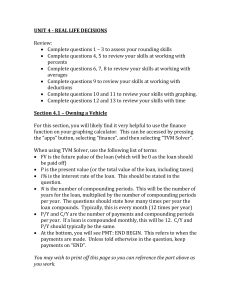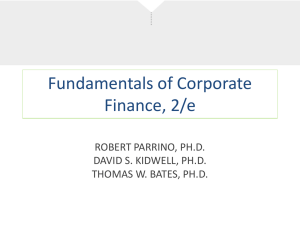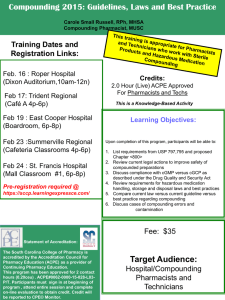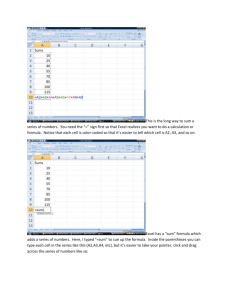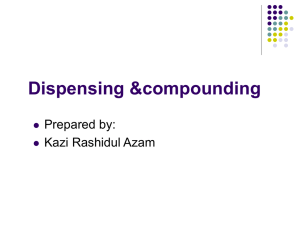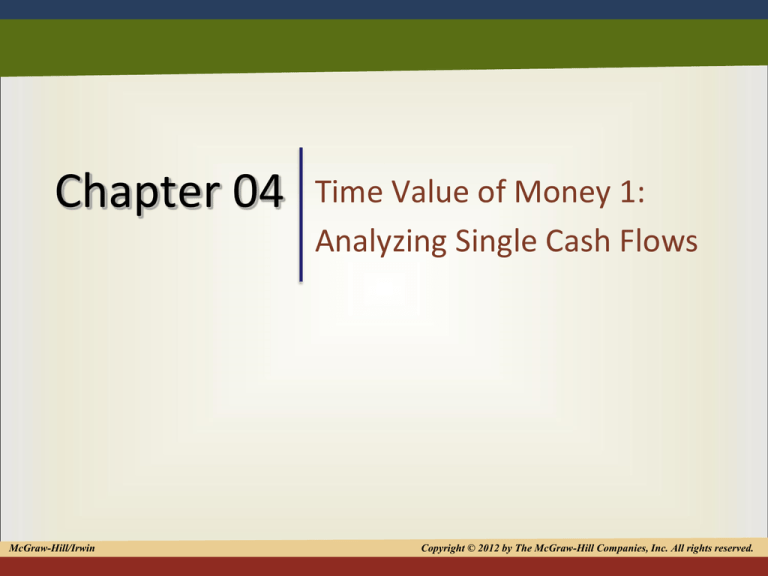
Chapter 04
McGraw-Hill/Irwin
Time Value of Money 1:
Analyzing Single Cash Flows
Copyright © 2012 by The McGraw-Hill Companies, Inc. All rights reserved.1
Introduction
• Time Value of Money (TVM)
– Powerful financial decision-making tool
– Used by financial and nonfinancial
business managers
– Key to making sound personal financial
decisions
4-2
Introduction (cont.)
• TVM Basic Concept:
– $1 today is worth more than $1 next year
• TVM Decision Based on:
– Size of cash flows
– Time between cash flows
– Rate of return
$Today
>
$ Next Year
4-3
Organizing Cash Flows
• Cash flow timing key to successful business
operations
• Cash flow analysis
– Time line shows magnitude of cash flows
at different points in time
•
•
•
•
Monthly
Quarterly
Semi-annually
Annually
4-4
Organizing Cash Flows
• Cash flow analysis
*Inflow = Cash received
• a positive number
*Outflow = Cash going out
• a negative number
Inflow
Positive #
Organization
Outflow
Negative #
4-5
Time Line Example
Outflow
Inflow
4-6
Future Value
• Value of an investment after one or more
periods
• For example: the $105 payment your bank
credits to your account one year from the
original $100 investment at 5% annual
interest
4-7
Single-period Future Value
– Concept: Interest is earned on principal
• Today’s cash flow + Interest = Value in 1 year
Formula:
4-8
Single-period Future Value
Example
– Assumptions:
• Invest $100 today
• Earn 5% interest annually (one period)
4-9
Compounding & Future Value
– Concept: Compounding
• Interest is earned on both principal and interest
• Today’s cash flow + Interest on Principal and
Interest on Interest = Value in 2 years
Formula:
4-10
Compounding & Future Value
Example
– Assumptions:
• Invest $100 today
• Earn 5% interest for more than one period
4-11
The Power of Compounding
• Compound interest is powerful wealthbuilding tool exponential growth
4-12
Present Value
• Opposite of Future Value
– Future Value = Compounding
– Present Value = Discounting
4-13
Present Value
– Concept: Discounting
• Value today of sum expected to be received in
future
• Next period’s valuation ÷ One period of
discounting
Formula:
4-14
Present Value Example
– Assumptions:
• Banks pays $105 in 1 year
• Interest rate = 5% interest
4-15
4-16
Present Value Over
Multiple Periods
– Concept: Discounting
• Reverse of compounding over multiple periods
Formula:
4-17
Present Value Over
Multiple Periods Example
– Assumptions:
• $100 payment five years in the future
• Interest rate = 5% interest
4-18
Present Value with
Multiple Rates
– Concept: Discounting
• Value today of sum expected to be received in
future -- variable rates of interest over time
Formula:
4-19
Present Value with
Multiple Rates Example
– Assumptions:
• Banks pays $2,500 at end of 3rd year
– Interest rate year 1 = 7%
– Interest rate year 2 = 8%
– Interest rate year 3 = 8.5%
4-20
Present Value &
Future Value
– Concepts: Discounting & Compounding
• Move cash flows around in time
– Use PV Calculation to discount the Cash Flow
– Use FV Calculation to compound the Cash Flow
4-21
PV & FV Example
– Assumptions PV:
• Expected cash flow of $200 in 3 years
• Decision: change receipt of CF to 2 years (one
year earlier)
• Discount rate = 6%
– PV Calculation to Discount the Cash Flow
for 1 year:
4-22
PV & FV Example
– Assumptions FV:
• Expected cash flow of $200 in 3 years
• Decision: change receipt of CF to 5 years later
• Compound rate = 6%
– FV Calculation to Compound the Cash
Flow for 5 years:
4-23
Rule of 72
– Concept: Compound Interest
• How much time for an amount to double?
Formula: 72 / i = Time for amount to double
4-24
Rule of 72 Example
– Assumptions:
• Interest rate = 6% interest
– Rule of 72 calculation:
72 = Amount of time for amount to double
6
72 / 6 = 12 years
4-25
Interest Rate to Double an Investment
4-26
Computing Interest Rates
– Concept: Solving for Interest Rate
– Complex Calculation – Use financial
calculator
Formula:
4-27
Computing Interest Rates Example
– Assumptions:
• Bought asset for $350
• Sold asset for $475
• Timeframe: 3 years
– Interest Rate Computation – Use financial
calculator
4-28
Solving for Time
– Concept: Solving for Time
– Assumptions/Known Data:
• Starting Cash Flow
• Interest Rate
• Future Cash Flow
– Complex calculation – use financial
calculator
4-29
Solving for Time Example
– Question: When interest rates are 9%,
how long will it take $5,000 to double?
– Assumptions:
•
•
•
•
Interest = 9%
PV = -5,000
PMT = 0
FV =10,000
– Solution: 8.04 years
4-30

